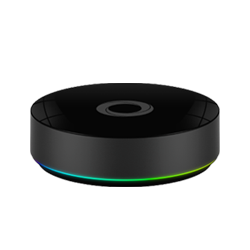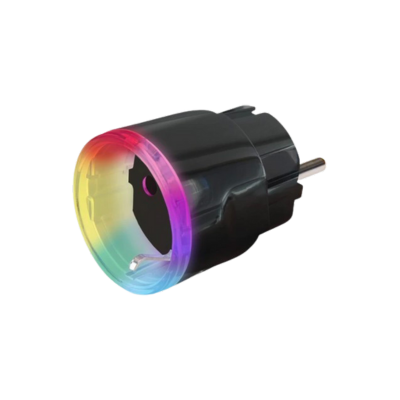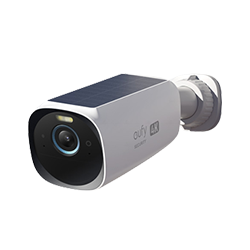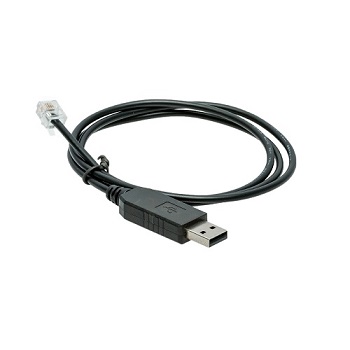
FLiRS De oplossing voor batterij modules
FLiRS| Wat is het en wat kan ik ermee?
Veel Z-wave sensoren werken op batterijen. Het nadeel van batterij gevoede Z-wave apparaten is dat energie besparende slaap modus. Om batterijen te sparen maken ze maar af en toe contact met de controller om hun waarden door te geven en om nieuwe opdrachten te ontvangen. Omdat slimme sensoren meestal op batterijen werken hebben ze dus te maken met deze wake-up vertraging. Waarden over temperatuur, Lux, vochtigheid e.d. zijn dus vaak niet real-time. Je kunt natuurlijk wel de wake-up time vaker zetten, maar dat gaat ten koste van de levensduur van de batterij. Best een dilema dus.
En dan hebben we het nog niet gehad over slimme sloten, die moeten natuurlijk direct reageren op commando’s om de deur open of juist dicht te doen.
Is er dan geen oplossing?
Jawel. En dat zijn FLiRS. Dit is de afkorting van Frequently Listening Receiver Slave.
Hoe werkt dat?
Als een Z-Wave basisstation of ander apparaat in het netwerk moet communiceren met een batterij aangedreven apparaat, zoals een sensor of een deurslot, stuurt het basisstation een speciaal signaal. Het doel van deze signaal is om het FLiRS apparaat op te wekken.
Het FLiRS apparaat wisselt op zijn beurt tussen slaapstand en een gedeeltelijk wakker modus waarin het op dit straalsignaal luistert, variërend van een keer per seconde tot vier keer per seconde (dit is de keuze van de ontwerper). Wanneer het FLiRS-apparaat dit speciale signaal ontvangt, wordt het direct wakker en communiceert dan met het basisstatoin of ander Z-Wave-apparaat met behulp van standaard Z-Wave protocol commando's. Als het apparaat geen speciaal signaal ontvangt, gaat het weer in sleep mode voor totdat het weer wakker wordt en luistert naar een volgende signaal. Het is deze gedeeltelijk wake-modus gecombineerd met de speciale signaal die ervoor zorgt dat de levensduur van de batterij gelijk is aan volledig slapende apparaten, terwijl er toch iedere seconde contact is.
De eerste FLiRs thermostaat is al beschikbaar, net zoals dit Z-wave slot.
Hieronder lees je de originele Engelse verklaring van Sigma
Abstract:
A key feature of the popular Z-Wave wireless communications protocol that’s particularly relevant to design-
ers of smart door locks, as well as smart thermostats, and other home automation and security devices is
the power-saving FLiRS operating mode. Without FLiRS, battery-powered smart door locks would be im-
practical. FLiRS, which stands for Frequently Listening Receiver Slave allows the product designer to set the
desired wakeup performance while optimizing battery life. FLiRs also employees unique beaming technology
that provides for transition from sleep to fully awake modes on the order of one second, a critical performance
requirement for battery powered devices that must be communicated with at any time with short latency. With
reliable, robust performance eld-tested in thousands of homes, the Z-Wave protocol is the best choice for
battery-powered door locks and many other home automation applications.
-----------------------
As the smart home and home automation markets keep expanding, along with traditional home and business security, there’s an ever-growing need for wireless devices that run on batteries. Many battery-powered sensor types for security, such as door/window sensors, and motion sensors, achieve very long battery life because they’re in sleep mode until they’re triggered or “tripped”. But other battery powered devices – such as door locks, thermostats, and control panels do not have the luxury of remaining in sleep mode for long periods of time, because they must always be listening to receive signals. Merely waking up every few seconds as other technologies do cannot provide the desired battery life. Sleeping for long intervals and then waking up to check a mailbox for pending messages can’t provide for a timely response. For example, a home automation controller might need to lock a door, it can’t wait for 30 seconds or more for the lock to wakeup and check in nor can the lock afford to fully wakeup every two seconds to check for commands. FLiRs solves this problem by providing a mechanism to wake up the lock within one second with battery drain very close to that of a fully asleep device.
How FLiRS Works
If a Z-Wave controller or other node in the network needs to communicate with a battery-powered device such as a door lock, the controller sends a special beam signal. The purpose of this beam is to wake up the FLiRS device.
The FLiRS device alternates between sleep mode and a partially awake mode in which it is listening for this
beam signal at the rate ranging from once per second to four times per second (this is the designer’s choice).
When the FLiRS device receives this beam, it immediately fully wakes up and then communicates with the
controller or other Z-Wave device utilizing standard Z-Wave protocol commands. If the device does not hear a
Beam it goes back to full sleep for another period until it partially awakes again and listens for a Beam. It is this
partially awake mode combined with the special Beam that provides for battery lives on par with fully sleeping
devices while providing communications latencies of around one second.
FLiRS is a standard feature of the Z-Wave protocol and has been available to the smart device designer since July 2013.
The FLiRS implementation in Z-Wave is extremely reliable, robust, and capable of extraordinary power savings to extend battery life. Using the 1-second rate for frequently listening, a typical (Sigma 500-Series) Z-Wave radio listening device will consume, on average, just 50-μA of power. For smart door locks, battery replacement at 1-year intervals, or even longer, becomes possible thanks to FLiRS.
The beaming strategy is not unique to the Z-Wave protocol, but for home automation applications, door locks
in particular, Z-Wave’s implementation is the best in the industry. With ZigBee, for example, a very different
beacon system is used that needs precise, synchronized timing between devices. This solution does not
provide the very short 1 second latency performance of the Z-Wave solution and requires expensive timing
crystal’s and other components that drive up the cost of the device. Additionally, the Z-Wave FLiRS beaming
works perfectly and reliably with repeaters, thus extending the potential range between a door lock or
thermostat and a controller. With ZigBee the use of repeaters can be unreliable, especially since there are so
many different implementations of the protocol that compatibility can be hit or miss. Additionally, with Z-Wave
FLiRS beaming, only the nal node in the network actually sends the beam signal to the FLiRS device, thus
further reducing latency when repeaters are utilized.
Wi-Fi is even more problematic, because it has no FLiRS mode. Which is why most Wi-Fi thermostats
require AC power. Some smart thermostats utilizing Wi-Fi or other protocols try to get around this problem
by implementing a relatively crude timer-based wakeup system in which the thermostat only wakes up every
10-minutes, or at even longer intervals. Such latency might be acceptable for a thermostat, although frustrating
for the consumer who wants conformation of the command action. Waiting 10 minutes to lock or unlock a
door is completely unacceptable.
For example, a homeowner might use a tablet app to adjust the temperature via the system controller. The app says the temperature has been set to the new number, but when the user looks at the thermostat, the temperature is still set to the old number. Frustrated, the consumer may next touch controls on the thermostat to set the desired temperature manually. This will have the effect of waking up the thermostat, so it accepts and display’s the new setting. Consumers may get the impression that their home automation systems are not working properly. And even if they see that eventually their adjustments take hold, they may still be puzzled by the delays.
Applications for Z-Wave FLiRS
The smart door lock is the “killer app” for Z-Wave FLiRS because of the design constraints previously explained. It’s the one device in today’s home automation and home security market that has such a stringent latency requirement that most other solutions are simply impractical. This is why Z-Wave is the communication solution of choice for more than 80% of the battery powered communicating door lock currently selling in the market.
Smart thermostats do not absolutely require the ultra-low latency of Z-Wave FLiRS, but they generally work better and better meet consumer expectations with their lower latency and higher reliability.
In addition to smart door locks and thermostats, other bene ciaries of Z-Wave FLiRS technology include smart lawn sprinklers and battery-powered automated window treatments. Any battery-powered device that requires listening for a control signal is a candidate.
Conclusion
Among modern technologies, batteries have progressed at a much slower rate than processors or displays, a situation that’s unlikely to change anytime soon. With the popularity of home automation being driven partly by the convenience and aesthetics of wireless devices, battery power is an essential requirement.
FLiRS is one of several features of the Z-Wave protocol that make it ideally suited to battery-powered applications. With over 1200 devices from hundreds of manufacturers already available, and all interoperable via Z-Wave, it is the world’s most widely deployed home automation wireless protocol. The Z-Wave implementation of FLiRS enables smart door lock manufacturers and thermostat manufacturers to offer consumers reliable, robust products that can operate for a full year or more before requiring battery replacement.








